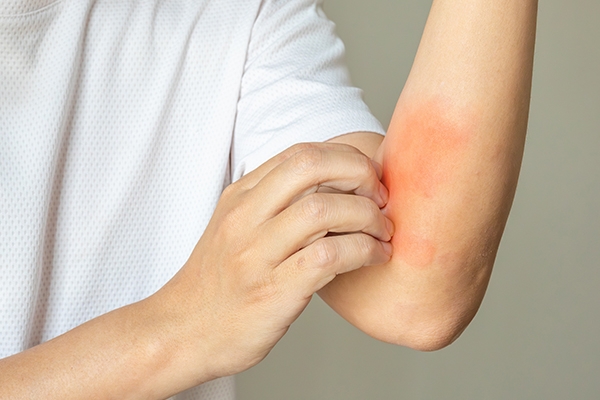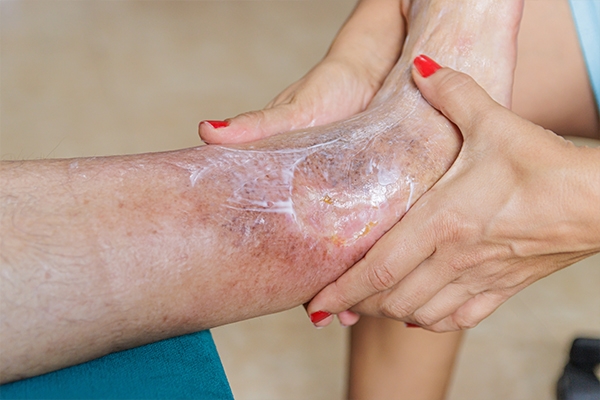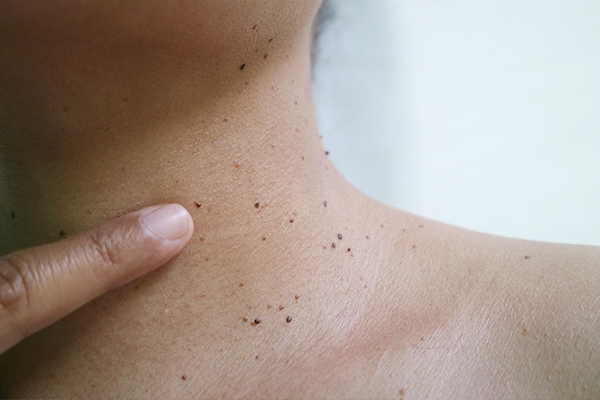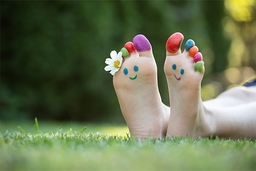Diabetes: Skin Symptoms That May Be Warning Signs

Did you know? Skin problems can be one of the first indicators of diabetes. The American Diabetes Association (ADA) asserts that skin issues frequently appear before a person is diagnosed with diabetes.
People with diabetes frequently have bacterial and fungal infections, as well as persistent itching.
Other common skin problems associated with diabetes include diabetic dermopathy, necrobiosis lipoidica diabeticorum, diabetic blisters, and eruptive xanthomatosis.
This happens because diabetes, particularly type 2, affects how the body manages glucose (blood sugar).
When the body fails to create enough insulin or respond to it appropriately, blood sugar levels can remain consistently high. This condition is known as hyperglycemia.
Over time, high blood sugar levels can damage many systems in the body, including blood vessels and nerves. As a result, the skin is more susceptible to infections, wounds take longer to heal, and other changes may develop.
Here are eight skin signs that can serve as early warnings of diabetes:
1. Dry and itchy skin
Dry skin can happen to anyone, but if you're constantly itchy, especially on your lower legs or arms. It could be related to poor blood circulation caused by diabetes.
High blood sugar levels drain fluid from body cells, including skin cells. This leads to dryness, flakiness, and even cracking.
2. Brown patches on the shins (diabetic dermopathy)

This condition is quite prevalent among diabetics. It usually appears as round or oval reddish-brown blotches on the shins. These may begin scaly and then flatten out, leaving slight indentations in the skin.
Although they’re not open wounds, these spots may indicate damage to small blood vessels. They may fade with good diabetes management, but can also remain over time.
3. Dark, velvety skin (acanthosis nigricans)

If you notice that your neck, armpits, or groin are becoming darker and thicker with a velvety feel, it could be a sign of prediabetes.
This condition, called acanthosis nigricans, is often associated with insulin resistance.
4. Thickened and hardened skin
This is known as diabetic scleredema. It usually appears on the upper back, shoulders, or neck, and causes the skin to feel thick, tight, and slightly swollen.
Even with controlled blood sugar, this condition can progress slowly over several months.
5. Slow-healing wounds
High blood sugar levels damage blood vessels and nerves, especially in the feet, making it harder for the body to heal wounds.
Even minor cuts can turn into diabetic ulcers (open sores) if not treated properly.
6. Skin tags (acrochordons)

Skin tags are small, soft growths that commonly develop on the neck, eyelids, or armpits.
Multiple skin tags, while usually harmless, may be a sign of insulin resistance.
7. Diabetic blisters (bullosis diabeticorum)
Large blisters resembling burn blisters can suddenly appear on the feet, hands, or arms.
Although they may look alarming, these blisters are usually painless and heal on their own within a few weeks.
If you notice new blisters, have them checked and keep your blood sugar under control to avoid further complications.
8. Eruptive xanthomatosis

This condition is marked by small, yellow, firm bumps about the size of a pea.
Each bump is usually surrounded by a red halo and may be itchy.
They usually appear on the backs of hands and feet, arms, legs, and buttocks.
This is more common in people with type 1 diabetes who also have very high cholesterol and blood fat levels.
The good news is, like diabetic blisters, eruptive xanthomatosis often improves or disappears once blood sugar and fat levels are well-managed.
How to prevent skin problems from diabetes
The most important step is keeping your blood sugar stable. In addition, daily skin care can help prevent complications.
Here are some practical tips:
- Check your skin daily, especially your feet and areas that are covered or hard to see.
- Use mild soap and warm (not hot) water when bathing. Hot water can dry out the skin even more.
- Gently pat your skin dry—don’t rub. Pay close attention to areas between your toes and body folds.
- Apply fragrance-free moisturizer after bathing, while your skin is still damp. Choose creams or ointments with ceramides to help lock in moisture.
- For dry or cracked heels, apply a cream containing 10–25% urea before bedtime.
- Drink enough water to keep your body and skin hydrated from within.
- If you have a wound, clean it with soap and water. Only use antibiotic ointment if advised by your doctor.
- Cover the wound with a clean bandage daily. If you notice signs of infection (redness, pain, swelling, discharge), see a doctor immediately.
- Use a humidifier at home to maintain air moisture, especially in dry weather.
Your skin can reflect what’s going on inside your body—including signs of diabetes.
By recognizing changes early and taking proper care, you can prevent serious complications and maintain a better quality of life.
Visit GWS Medika Clinic, a trusted healthcare provider in Jakarta, to get a full picture of your health.



